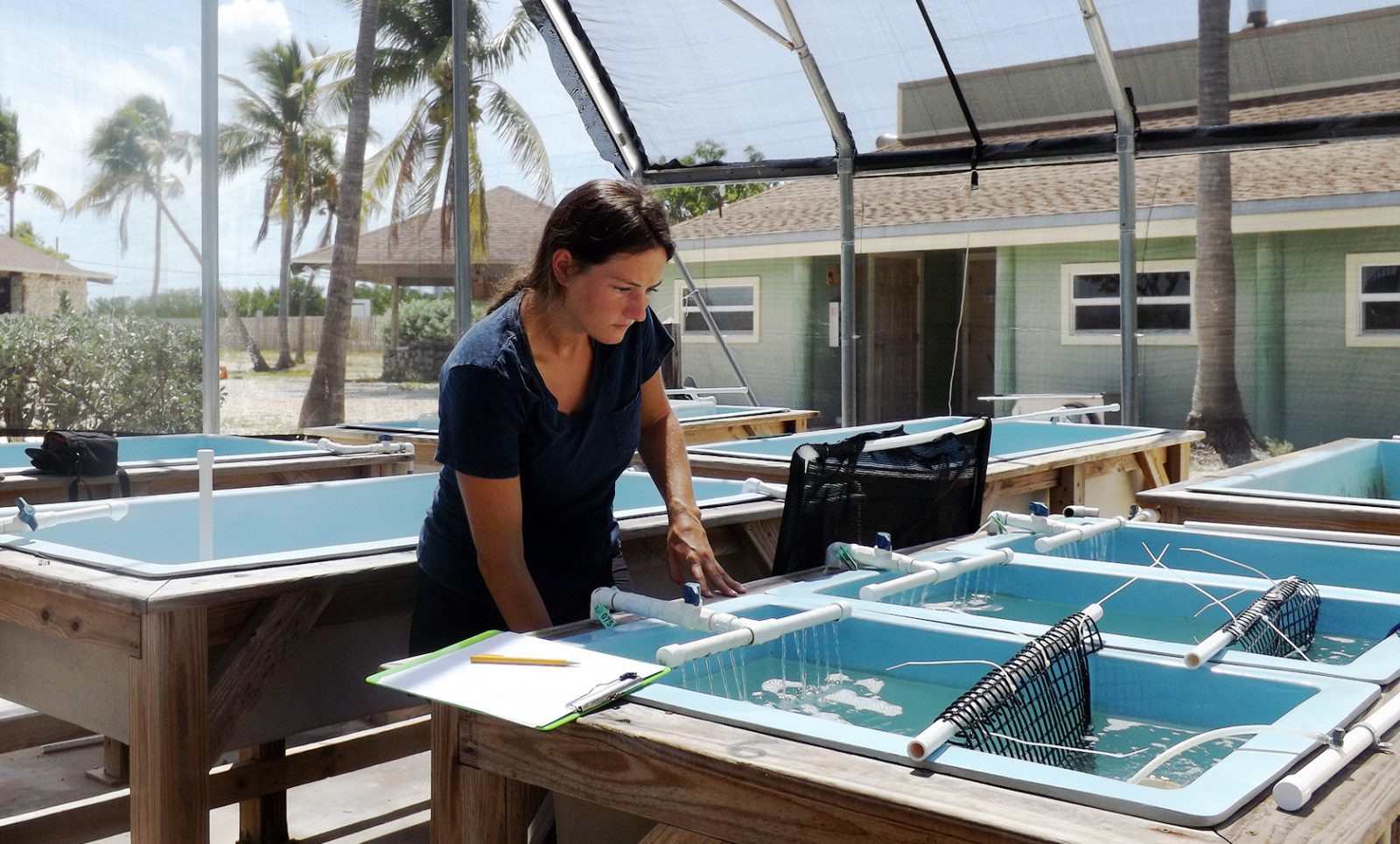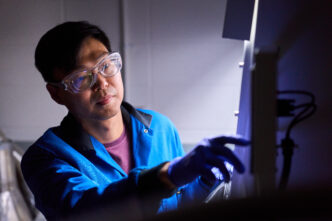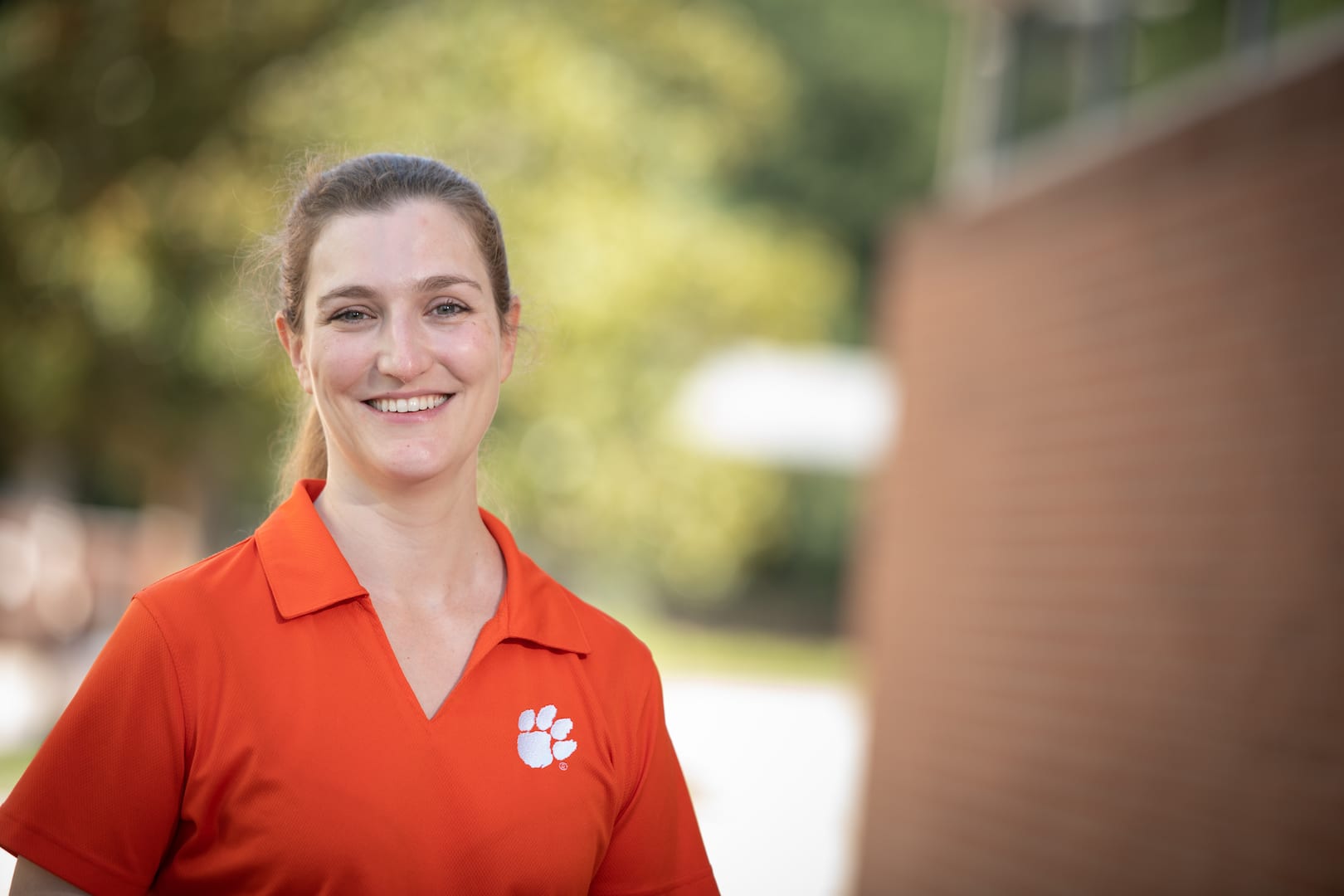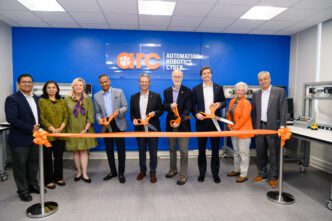CLEMSON, South Carolina – In high school, students are taught that research revolves around the scientific method: start with a question, formulate a hypothesis, design and perform an experiment, collect and analyze the data, draw a conclusion, and publish the results.
The reality, though, which many students subsequently learn in college, is that research is rarely that cut and dried. More often than not, researchers start out trying to answer one question but end up working on something different because in the course of observation and experimentation they find something unexpected that takes the research in a new direction.
A case study in how research really works
So it was for College of Science graduate student Kara Noonan. Noonan arrived at Clemson in early 2017 to begin her master’s studies on the relationship between coral reef structure and reef fish abundance. She was inspired to pursue an advanced degree after working for two years on marine-preservation projects, including monitoring and rescuing sea turtles, dolphins, whales and manatees at the Mote Marine Lab in Sarasota, Florida. She also managed various live fish exhibits at Chicago’s Shedd Aquarium.

“These were all phenomenal experiences that drove me to come back to school so I could eventually pursue leadership positions at of one of these organizations or become a lead investigator,” said Noonan, who joined the research group of biological sciences associate professor Michael Childress.
In the summer of 2017, Noonan made her first trip to the Middle Florida Keys, where Childress and his students have been conducting field studies on how marine animals respond to habitat loss for more than a decade. Noonan helped senior graduate student Kylie Smith harvest and transplant fragments of four different types of coral at eight reefs to see which species are most resilient and might play a role in saving the area’s coral reefs.
In fact, Smith’s research was timely because a new and potent disease was spreading rapidly through the area, wreaking havoc on all number of coral species. Thought to be caused by bacteria, the highly lethal Stony Coral Tissue Loss Disease (SCTLD) was first reported along the southeast coast of Florida in 2014. It reached the site where Childress and his students conducted their research in June 2018, just as Noonan was set to begin her field research on the relationship between coral reef structure and reef fish abundance.
The value of coral reefs
According to the National Oceanic and Atmospheric Administration (NOAA), coral reefs are among the oldest and most diverse ecosystems on Earth. They house and feed fish and other marine life that millions of people eat. They also protect coastlines from storms and erosion, provide habitat and nursery grounds for many fish species, and are a source for new medicines.
In the Florida Keys, the coral reef ecosystem accounts for nearly 60 percent of all jobs — mainly in tourism, recreation and fishing industries — and generates more than $3 billion in sales and income each year.
However, the reef ecosystem has been declining for more than 30 years because of warming ocean temperatures, unsustainable fishing practices, and pollution. Marine biologists consider reefs to be the most critically imperiled ecosystems on the planet.
According to Childress, hard corals, which are the building blocks of the reef, are simply disappearing. “Where 50 percent of the bottom used to be covered with corals, now only five percent is,” he said. “We can actually expect that there’s a possibility of losing all corals within our lifetime.”

In June 2018, Noonan was set to test her hypothesis about how reef physical structure influences the types and numbers of fish that live there. Working with several undergraduate students who were part of Clemson’s Creative Inquiry (CI) program, Noonan built artificial reef structures out of PVC pipes, vexar fencing, and zip ties and made multiple dives into the warm, blue waters to install them on the sea floor.
These artificial structures mimicked the shape and size of hard and soft corals and could shelter fish and other marine mammals from predators. To measure fish numbers, Noonan and the CI students conducted dive expeditions. They also installed GoPro cameras on the structures, as well as on nearby healthy, diseased and dead corals to see how those differed in their reef fish communities.
According to Noonan, she noticed something interesting about one of the coral-eating fish species. The small, colorful foureye butterflyfish seemed to be attracted to SCTLD-infected corals and was observed eating the diseased coral tissue — the only fish to do so.

“We’d watch the fish feed on the diseased tissue and then watch them move to a healthy coral next to it,” Noonan said. “I wondered how this direct contact was affecting the healthy coral.”
Noonan filed that observation in the back of her mind and spent the fall 2018 and spring 2019 semesters reviewing video footage and analyzing other data in order to begin writing her master’s thesis on the relationship between reef structure and fish communities.
According to Childress, butterflyfish are coralivorous and nip at healthy coral polyps as their preferred food, but they have no negative effect on the corals because their bites are small, and corals can easily regrow missing polyps. Like Noonan, Childress wondered if her observations of the fish eating diseased coral were an anomaly or something more.
After analyzing more data and talking with Childress, Noonan decided by late spring 2019 to change her research direction and delve into a new thesis topic: the feeding preferences of foureye butterflyfish and what impact that may have on the healing or progression of diseased corals.
“It was hard to move away from a project that I’m still passionate about understanding and have dedicated so many hours to,” said Noonan, who admitted the decision was made more difficult because she was getting close to wrapping up her M.S. degree. “But I’ve learned that being flexible is a major part of becoming a successful researcher because ultimately you never know what nature will do next.”
Noonan began formulating a new hypothesis and designing experiments that she could conduct when the Childress team returned to the Keys in June.
“I was extremely excited, and getting to work longer in the Florida Keys isn’t the worst thing in the world,” she said. “Of course, this meant I would be doing a lot more work than I had initially planned, but it’s worth it if there’s a possibility of my research actually making a difference. If what I find in this study can actually help protect coral reefs, then that’s the ultimate goal.”
Noonan enthusiastically waded into the bureaucratic labyrinth, completing what Childress described as a mountain of paperwork to secure permits, obtain approvals, and devise protocols for experiments that involved having corals and vertebrates in captivity.
Although she got all the permissions and approvals in a short time, she recalls this process as being unbelievably frustrating, overwhelming, and seemingly endless.
“The whole imposter syndrome that graduate students like to talk about was 100 percent engaged,” said Noonan, referring to the phenomenon where individuals feel they haven’t earned their accomplishments and fear others will view them as frauds. “But I figured I was in the same boat when I started my master’s degree and I was able to overcome that terror, so I knew I could get through it and it would be worth it in the end.”
Childress was impressed with her efforts and ability to navigate the local, state, and federal requirements.
“It’s one of the things that people would never see — just how hard it was to do a simple experiment,” Childress said. “There’s so much that goes into that to make it work, like permitting and cooperation from other scientists, the people who collected our fish and corals, the marine lab where she did the experiments. Kara pulled it off, which was one of those great triumphs for a grad student to do everything to conduct the experiment.”
Rather than spend the summer diving and observing the fish in the sea, Noonan set up land-based experiments at the Keys Marine Lab to test her hypothesis.
Specifically, Noonan is investigating whether butterflyfish feeding habits accelerate the rate at which SCTLD-infected coral recover from the disease.

Over the course of 21 days, Noonan placed both healthy and diseased fragments of coral in a 40-gallon tank with a single butterflyfish and filmed as the fish explored and fed on the coral fragments. She observed the fish taking bites from both healthy and diseased fragments, seemingly not preferring one over the other.
At the same time, she also tracked SCTLD spreading from the infected fragment to the healthy fragment, observing that the presence of a butterflyfish seemed to slow down the spread of the disease compared to the rate of transmission in control tanks without a butterflyfish present.
As Noonan was conducting these experiments, CI students were recording and observing butterflyfish coral-eating habits in the sea. This fall, they have been reviewing hours and hours of video, quantifying the fishes’ behavior and preferences. Noonan’s goal is to analyze all the data and write a research paper where she’ll present her findings in the spring.
While many research teams are studying SCTLD and what makes it so lethal to coral reefs, Noonan believes her study examines the issue from a unique angle. “No one has really looked at the effect the fish have on diseased coral, so I’m hoping when I publish my results we can get Clemson’s name into that collaborative pool,” said Noonan, who aims to finish her work in spring 2020.
In the meantime, other researchers have taken an interest in Noonan’s research, having learned about her line of inquiry from the permitting process.
“In order to get state and federal permits and lab space at the marine lab, we had to share with our colleagues what we had observed and what we would be doing to expedite the paperwork so Kara could start her experiments,” Childress said.
Fortunately, the Mote Marine Lab, which supplied the coral for Noonan’s experiments, let Childress know that another graduate student was thinking about doing the same experiments. Childress and Noonan contacted that student to avoid duplicative efforts.
“That happens and a student can get devastated when an individual goes to publish his/her thesis and a paper gets published a month before on the exact same subject,” said Childress. “In this case, I think everyone who knows we are working on this has been very good about trying to let us know when other people may be pursuing the same question.”
Noonan views the new interest in butterflyfish feeding habits on SCTLD-infected coral as a positive thing.
“I feel a rush to publish, but I try to keep the mentality that if someone is following up on my project it’s because there is something interesting there,” Noonan said. “If more people working on this project can lead us to results that build an overall understanding of the ecosystem and form restoration practices, then it’s worth not having ‘ownership’ of the topic.”
Noonan couldn’t have changed her research focus without the help of undergraduate students working in Childress’ group.
“Kara’s development as a scientist and this race to solve an important environmental issue couldn’t be done without the support of Creative Inquiry undergraduates,” Childress said. “They are absolutely essential to this endeavor.”
CI is a campus-wide program that enables undergraduates to conduct research on a myriad of projects.
Creative Inquiry students’ contributions
Although she didn’t travel to the Keys this summer, animal veterinary sciences senior Emma Crowfoot has been working with fellow CI student Rachel Radick this fall on helping review video footage of the butterfly fish feeding preferences in the wild and in Noonan’s land-based lab experiments. Working with Behavioral Observation Research software (BORIS), they wrote their own code to analyze the videos and quantify the fishes’ behavior.
After helping Noonan with her research through CI, Emma Crowfoot is confident that marine sciences are right for her. “CI has definitely encouraged me to continue in that direction,” said Crowfoot, who has wanted to be an aquatic animal vet since she came to Clemson as a freshman and is currently applying to vet schools.
According to Crowfoot, another benefit of CI is the opportunity to present research results to her peers, graduate students, and faculty. Crowfoot and other members of Childress’ team presented posters at several campus research symposia this past year, placing second at the biological sciences CBASS symposium in April 2019.

“CI has helped me develop my confidence in public speaking and that’s a huge help to my research and will help me in professional school and my future career,” Crowfoot said. “It pushed me outside my comfort zone but in the best possible way.”
A major benefit of CI for Radick has been getting an insider’s view of what research is all about. She has always wanted to do marine biology, but even as recently as several years ago, she was not sold on research.
That is until this past summer when she participated in the Keys research. Radick helped Noonan set up the lab experiments, including obtaining butterfly fish and healthy and diseased corals, and video-recording the fish feeding.
“I had every undergrad’s dream job — I counted fish poop,” Radick said wryly. “Actually, it was nice to be a part of this whole process because the field work has really shown me what research is all about and I want to keep doing this type of research in graduate school.”
Radick also appreciated getting to know her graduate student mentor and faculty advisor on a personal level.
“It’s nice to have this personal connection,” she said, referring to the time they all spent together working 10-hour days either diving or conducting experiments with the fish at the Keys Marine Lab. “Dr. Childress told us what he expects of us; and Kara was a great mentor, walking me through the research process.”
CI as life-changing opportunity
CI has dramatically changed Riley Garvey’s career trajectory. In the fall of 2018, the mechanical engineering sophomore was waiting in a campus office to interview for a co-op position when he began to page through a copy of Clemson World magazine. A feature story about Clemson researchers’ efforts — including CI undergraduates — to restore coral reefs in the Florida Keys caught his eye.
“I thought it was interesting that Clemson did something with marine science,” recalled Garvey, who wasn’t completely sure about his major at the time. He applied for a CI research position.
Several months later, Garvey received job offers from the co-op company and from the Childress lab. He switched his major to biosystems engineering and joined the Childress lab.
Garvey spent the summer of 2019 diving almost daily with other members of the Childress lab in the Florida Keys about 100 miles southwest of Miami. Armed with a GoPro camera, he observed the numbers and types of fish interacting with both natural reefs and the artificial reef structures that the graduate students had designed and installed on the sea floor.
The purpose of the experiment was to study how the reef fish interacted with the structural component that the coral reef provides. As Noonan’s research focus shifted, Garvey narrowed his observations on the butterfly fish, counting their numbers and filming their eating habits.
“The CI experience has had a major impact on me,” said Garvey, who earned a National Oceanic and Atmospheric Administration internship for summer 2020 and plans to study marine science in graduate school. “In the last few years my goals have gone from helping people with my engineering degree to helping people through marine science.”
Garvey says he’s grateful for the opportunity to conduct field research in the Keys and will always remember diving and swimming with the reef fish and other marine mammals.
“It’s such a strange experience because you’re completely weightless, floating in the bluest of blue water and looking at all these colorful fish,” said Garvey about diving about a mile or two from shore. “As we rose to the surface, there was a real dichotomy between the near-silence under the water with the waves hitting the boat and people on board talking and shouting.”








